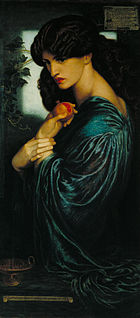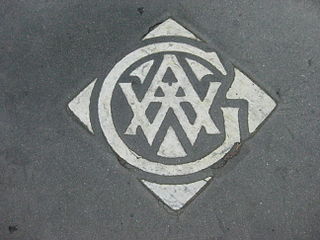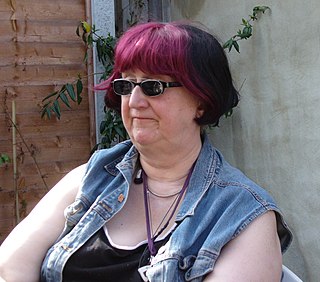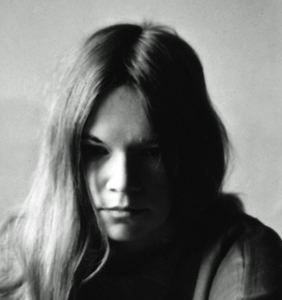
The Peterloo Massacre took place at St Peter's Field, Manchester, Lancashire, England, on Monday 16 August 1819. Fifteen people died when cavalry charged into a crowd of around 60,000 people who had gathered to demand the reform of parliamentary representation.

The Pre-Raphaelite Brotherhood was a group of English painters, poets, and art critics, founded in 1848 by William Holman Hunt, John Everett Millais, Dante Gabriel Rossetti, William Michael Rossetti, James Collinson, Frederic George Stephens and Thomas Woolner who formed a seven-member "Brotherhood" modelled in part on the Nazarene movement. The Brotherhood was only ever a loose association and their principles were shared by other artists of the time, including Ford Madox Brown, Arthur Hughes and Marie Spartali Stillman. Later followers of the principles of the Brotherhood included Edward Burne-Jones, William Morris and John William Waterhouse.
William Sydney Graham was a Scottish poet, who was often associated with Dylan Thomas and the neo-romantic group of poets. Graham's poetry was mostly overlooked in his lifetime; however, partly thanks to the support of Harold Pinter, his work was eventually acknowledged. He was represented in the second edition of the Penguin Book of Contemporary Verse and the Anthology of Twentieth-Century British and Irish Poetry.
Events from the year 1958 in Ireland.

Jeremy Deller is an English conceptual, video and installation artist. Much of Deller's work is collaborative; it has a strong political aspect, in the subjects dealt with and also the devaluation of artistic ego through the involvement of other people in the creative process. He won the Turner Prize in 2004.

Anarchism has long had an association with the arts, particularly with visual art, music and literature. This can be dated back to the start of anarchism as a named political concept, and the writings of Pierre-Joseph Proudhon on the French realist painter Gustave Courbet. In an essay on Courbet of 1857 Proudhon had set out a principle for art, which he saw in the work of Courbet, that it should show the real lives of the working classes and the injustices working people face at the hands of the bourgeoisie.
The Group was an informal group of poets who met in London from the mid-1950s to the mid-1960s. As a poetic movement in Great Britain it is often seen as being the successor to The Movement.
Robin Skelton was a British-born academic, writer, poet, and anthologist.

The Art Workers' Guild is an organisation established in 1884 by a group of British painters, sculptors, architects, and designers associated with the ideas of William Morris and the Arts and Crafts movement. The guild promoted the 'unity of all the arts', denying the distinction between fine and applied art. It opposed the professionalisation of architecture – which was promoted by the Royal Institute of British Architects at this time – in the belief that this would inhibit design. In his 1998 book, Introduction to Victorian Style, University of Brighton's David Crowley stated the guild was "the conscientious core of the Arts and Crafts Movement".
John Anthony Connor is an English poet and playwright.

Gallery Mau Mau (1996–1998) was a counter-culture "art space" situated in Cape Town, South Africa. Although short-lived, the experimental space provided low-cost access to the arts for artists of all races, broke boundaries and defined the period in which a visual arts culture saw enormous growth in the city. It was run by cultural activist David Robert Lewis, multimedia artist Adam Lieber, musician and disk jockey Nick Birkby and fine artist Chris Slack.
Donald Michael Kraig was an American occult author and practitioner of ceremonial magic. Kraig published six books, including his 1988 introduction to ceremonial magic, Modern Magick. He was also an editor for Fate Magazine and for his main publisher Llewellyn Worldwide.

Roz Kaveney is a British writer, critic, and poet, best known for her critical works about pop culture and for being a core member of the Midnight Rose collective. Kaveney's works include fiction and non-fiction, poetry, reviewing, and editing. Kaveney is also a transgender rights activist. She has contributed to several newspapers such as The Independent and The Guardian. She is also a founding member of Feminists Against Censorship and a former deputy chair of Liberty. She was deputy editor of the transgender-related magazine META.

The Culture of Manchester is notable artistically, architecturally, theatrically and musically. Despite being the 5th largest city in the United Kingdom by population and the second largest conurbation, Manchester has been ranked as the second city of the United Kingdom in numerous polls since the 2000s (decade), with an influential culture scene helping to elevate Manchester's importance in the national psyche. This has helped the city's population grow by 20% in the last decade, and made the universities the most popular choices for undergraduate admission.

Laurence Whitfield is an English artist. He was a member of The Peterloo Group, and studied at Manchester Regional College of Art, now known as Manchester College of Arts and Technology (MANCAT).
John Lyons is a Trinidad-born poet, painter, illustrator, educator and curator. He has worked as a theatre designer, exhibition adviser and as a teacher both of visual art and creative writing. As an art critic, he has written essays for catalogues, notably for Denzil Forrester's major touring exhibition Dub Transition, for Jouvert Print Exhibition and Tony Phillips' Jazz and The Twentieth Century.

The Factory is a cultural space currently being built in Manchester, UK, which is to be the permanent home of the Manchester International Festival. It is inspired by the city's history of innovation and MIF's "reputation for big-hitting world premieres, envelope-pushing new work" and "being one of the leading worldwide incubators for new, cutting-edge art."

Rosemary Mayer (1943–2014), was an American visual artist who was closely associated with the feminist art movement and the conceptual art movement of the 1970s. She was a founding member of A.I.R. gallery, the first all-female artists cooperative gallery in the United States.
Rosemary Campbell is a New Zealand artist and teacher.









